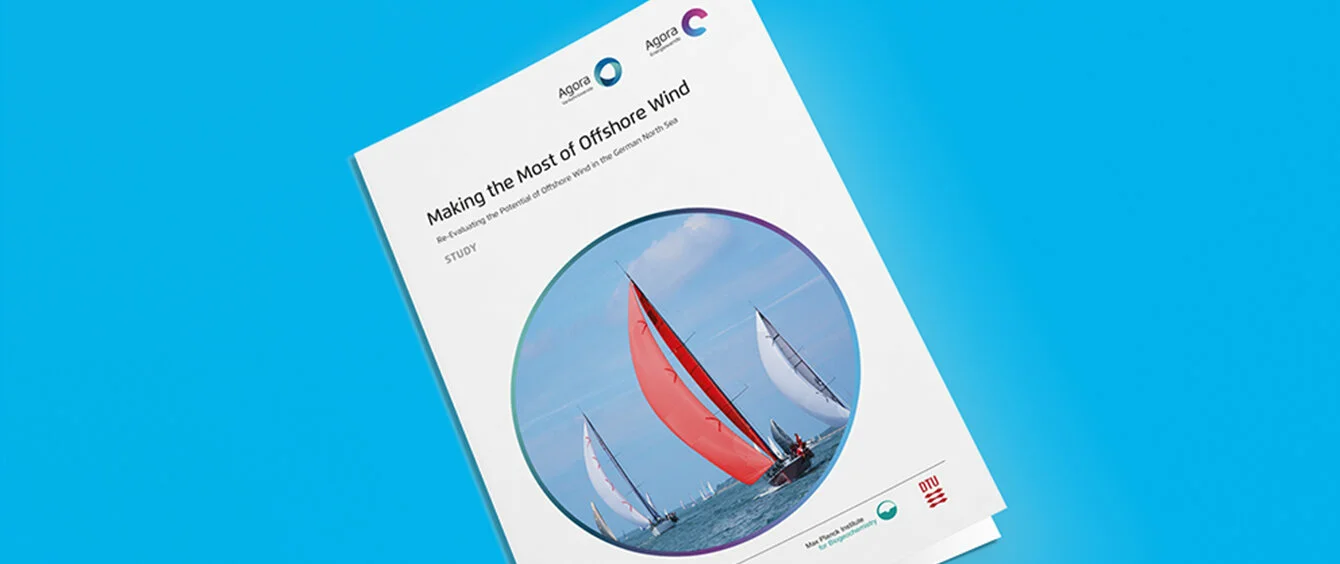The power of wind is virtually limitless – when it blows. The same holds true for its potential to produce electricity. In actual fact, however, we all know that there are limits. After all, the turbines sap the energy of the air current. In other words, much like a ventilator accelerates wind as it converts electricity to kinetic energy, a wind turbine slows it.
In sum, this effect is minimal: The lee side of large wind farms is far from being in a constant lull. Despite this, it is by no means inconsequential to the efficiency of wind turbine arrays. Quite to the contrary, the distance between the wind turbines is key to an efficient yield. If the turbines are too close to each other, they take the wind out of each other’s sails, or in other words, their rotors.
Two approaches, one outcome
This is the very effect for which think tanks Agora Energiewende and Agora Verkehrswende commissioned assessments. The subject of the investigation were the offshore wind farms in the German North Sea, which measures 200 sea miles in width and is solely used for economic purposes. The upshot: The expansion of wind energy at sea, where winds blow very constantly and largely unhindered, requires careful planning to ensure optimum yields.
Heading up the study were scientists from the Technical University of Denmark (DTU) in Roskilde and the Max Planck institute (MPI) for Biogeochemistry in Jena. The teams picked two scenarios differing in terms of wind turbine number and capacity per square kilometre and with regard to the wind farms’ assumed locations. According to Agora, the researchers found it “quite remarkable” how similar the results were despite the difference in approach.
Consequences for offshore wind expansion
Offshore wind is considered a central component of Germany’s and Europe’s energy transition. So far, the cost of generating a kilowatt hour of electricity from offshore wind has clearly exceeded that of onshore wind. Nevertheless, ocean winds are deemed an essential source of energy when it comes to ensuring zero-emissions security of supply, because their speeds are much more constant than on land.
Especially given that construction costs are higher at sea, offshore wind farm operators are forced to focus even more on efficiency. In line with the motto ‘less is more,’ Agora Energiewende Director Patrick Graichen proposes planning offshore wind farms with a “rather low area output” and calls for international arrangements: “Since Germany’s neighbour countries also have major offshore wind expansion plans, it is imperative that countries with North Sea coastlines coordinate their projects and embark on joint planning.”
According to Agora Energiewende, offshore wind turbines with a combined installed capacity of up to 450 gigawatts (GW) could be built throughout Europe by 2050, 70 GW of which would be in German waters. This would suffice to cover 30 to 50 percent of today’s demand for electricity. Based on figures from the European sector association WindEurope, 22 GW in offshore generation capacity had been installed by the end of 2019. As before, the country ranking is headed by the United Kingdom (9.9 GW), followed by Germany (7.4 GW) and Denmark (1.7 GW). At the global level, only China showed up in this ranking – accounting for 3.6 GW (as of the end of 2018).
Photo credit: © Agora Energiewende
